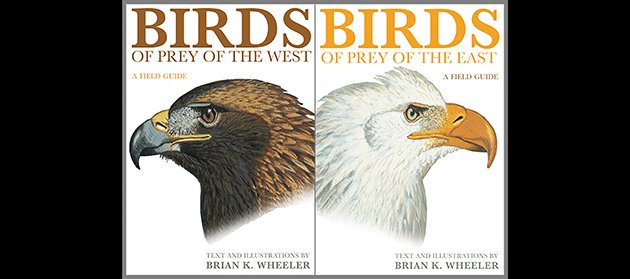
There are 35 raptor species that have a presence in the United States and Canada, 56 (more or less) if you count by subspecies, and they are all covered in admirable, exhausting, unbelievable detail in Birds of Prey of the East: A Field Guide and Birds of Prey of the West: A Field Guide by Brian K. Wheeler. These guides are sequels, updates, and complements to Wheeler’s previous classic books, Raptors of Eastern North America and Raptors of Western North America (PUP, 2003), now out-of-print and fetching prices in three figures on used-book sites. There is a major difference: the Raptors guides are photographic and the Birds of Prey guides are illustrated with Wheeler’s paintings, over 1,000 images in each guide, organized with logical precision for reference, research, and comparison, with a self-evident side benefit–the portrayal of the beauty of raptors.
Plate 40. Bald Eagle, Head Portraits, Birds of Prey of the East
Birds of Prey of the East and Birds of Prey of the West are not totally perfect guides, but they are way up there on the field guide scale. The more I examine these books, the more in awe I become of the time, attention, and thought that Wheeler put into them and the potential payoff for hawkwatchers and birders who want to identify and discuss raptors knowledgeably.
Structure & Organization
Like most regional bird guides, the Mississippi River is the line of demarcation. Birds of Prey of the East covers species that reside or migrate east of the Mississippi River and east of Manitoba and the west shore of Hudson Bay in Canada, and eastward across the Arctic islands to Greenland. There is a total of 27 species covered, in 72 plates, including 3 casual and accidental species. Birds of Prey of the West covers raptors west of the Mississippi River and west of Manitoba and the western shore of Hudson Bay, then north into Nunavut and west across the Arctic islands, the Northwest Territories, and Alaska west to the Aleutian Islands—a total of 33 species portrayed in 85 plates. Both volumes only cover areas north of Mexico (though the distribution maps for some species in the Western book do go across the border).
List of Plates (2 pages of 3), Birds of Prey of the West
Overall, Wheeler follows the 2016 AOU/American Ornithologists’ Union (now AOS/American Ornithologists’ Society) Checklist (7th edition, 57th supplement), but there are exceptions. Bald Eagle has been moved next to Golden Eagle. And, there are special “regional sections” at the back of the Species Accounts: “Florida-only Species and Subspecies” and the “Western Species and Subspecies That Are Casual or Accidental in the East” in the Eastern guide and “Southwestern Specialty Species” in the Western guide. This explains why, if you are looking at the list of plates in the Eastern guide, the “South Florida” subspecies of Red-shouldered Hawk and the “Florida” subspecies of Red-tailed Hawk are near the end of the guide and not with the other plates in the Species Accounts, and why Aplomado Falcon is the very last species in the Western guide.
Species Accounts
The focus on a small number of species allows Wheeler to treat subspecies with the same attention and space that most field guides give to species. So, to give an example, there are three separate species accounts for Merlin in the Western guide: “Taiga,” “Richardson’s,” and “Black.” And, four separate species accounts for Red-tailed Hawk in the Western Guide and three in the Eastern guide (plus, a plate on ‘albinos and other variants’!). In some cases, subspecies are combined on the plates due to “minor plumage differences or small numbers of figures” (p. 23). (Interestingly, Wheeler notes in the Introduction that he regrets lumping “Krider’s” and “Eastern” Red-tailed Hawk, which he now regards as “historically” separate species. The amount of information on Red-tailed Hawk and their subspecies in these volumes could be a book unto itself.)
Plate 30, Red-tailed Hawk, “Eastern” and “Krider’s,” 1-Year-Olds and Adults, Perching, Birds of Prey of the West
Each species/subspecies is presented by age and type of pose, though not strictly so for each species. As always with good field guides, it depends on the species. Vultures, Northern Harrier, Osprey, some of the Kites, and Falcons, with their less complicated plumage age differences, don’t have separate plates for juvenile plumages, with the exception of Gyrfalcon. And, Eagles, surprisingly, don’t either, the emphasis being on their heads, tails, and how they look in flight.
Species accounts in each guide are specific to that guide and its region, even when there is little difference overall. Cooper’s Hawk, for example: The overall plumage descriptions, images, and image text for ‘Cooper’s Hawk, 1-year old and Adult’ in each book look exactly alike until you realize that the Western guide includes descriptive text and a drawing of the Great Plains morph. Similarly, the Eastern guide account for Osprey includes the “Ridgeway” subspecies (which I imagine is not presented separately in the ‘Florida’ section because it is so rarely seen), it’s white head cropping up in a space left open in the Western guide.
Plate 3, Osprey, Birds of Prey of the East
Species Account–Closer Look
What exactly does each Species Account contain? Northern Goshawk, Eastern guide, is a good example to use since it’s relatively brief (the account in the Western guide is 4 pages longer). Plate number, common name, scientific name, and age portrayed on the plate head the ‘data page, ‘ Wheeler’s term for the text page opposite each plate. The common name of the species is also noted in the upper left corner. These features simplify browsing, still the most common way birders look for a specific species.
Plate 12, Northern Goshawk, Juvenile, Birds of Prey of the East
The following ‘introductory text’ gives a detailed description of the plumage of the age(s) being portrayed, noting any sexual dimorphism. Species-unique plumage traits and age-unique plumage traits are noted in italics. “Subspecies” notes the number of subspecies in North America and beyond those borders (1 in the East and much of the West, 1 additional subspecies in the northern West, 6 in Eurasia for Northern Goshawk). “Col0r morphs” notes if there are any for the species (none for Northern Goshawk). “Size” includes length and wingspan measurements, in this case for both male and female since Northern Goshawk is sexually dimorphic. Information on “Habits,” “Food,” “Flight,” and “Voice” is brief, but specific. Northern Goshawks are secretive and do not perch on utility poles; their prey can be as large as Snowshoe Hares; they fly with a series of “moderate-speed wingbeats interspersed with glides;” both juvenile and adult Northern Goshawks are silent except around the nest, when they do a “harsh cack-cack-cack.”
The introductory text is followed by numbered plumage descriptions for each image opposite, again with distinctive features in italics. Even the feathers are fully described. (The two feathers in the above plate are juvenile secondary flight feathers; the one above has a gray subterminal band that separates the goshawk from juvenile Cooper’s Hawk, the one below has a black subterminal band similar to juvenile Cooper’s Hawk.) The use of bolded headings, italics, and two-column listings make, what could be an enormous amount of data, easy to read, relate to the visual information opposite, and interpret.
Plate 13, Northern Goshawk, 1-Year-Old and Adult, Birds of Prey of the East
The Plates
One of the first things you’ll notice about the plates themselves is the backgrounds. Unlike most identification and field guides, Wheeler deliberately uses blue, brown, green, blue-gray, and blue-green backgrounds. And these aren’t just paintings made on white paper digitally dropped onto colored backgrounds, these are images painted onto “100 percent rag, acid-free, mat boards.” Wheeler maintains that this technique allowed him to “control light-dark contrast, especially pale trailing edges of wings and tails and pale translucent wing windows of buteos” (p. 12).
I’m giving the exact quotes here because I’m not an artist and I don’t want to misrepresent Wheeler’s ideas. But, I have to say that I am of two minds about the backgrounds. Initially, I found it difficult to make out the images; I found the dark backgrounds made them rather murky.
Plate 46, Rough-legged Hawk, 1-Year Old and Adult, Flying (dorsal view), Birds of Prey of the West
Then, I looked at them in bright light and every head, tail, perched and flying figure came alive. Particularly the wing windows. And, the Osprey and Eagle heads. And, the white lines of the Northern Goshawk tail.
Plate 33, Red-tailed Hawk, Juvenile, Flying, Birds of Prey of the West
So, I understand Wheeler’s point. And, I also think that part of my initial apprehension was because I’m so used to seeing white backgrounds in field guides. Still, I think the effectiveness of the colored backgrounds are partially compromised by the small proportions of the books (about the same height as the newer Peterson’s regional field guides and a little deeper), and that some of the darker plumages, like the Rough-legged Hawks above, would work better against lighter backgrounds.
Wheeler’s overall goal for his guides is to enable users to compare the same features and poses and angles of view with consistent lighting across species. So, the placement and background color of each plate has been planned out meticulously: All birds face left. Perched birds are shown in profile with the upper side (dorsal) of the tail shown. Flying birds are shown in four different positions, designed to portray the hawk’s wing size and shape while soaring, flapping, and gliding, from both upper-side (dorsal) and underside (ventral), in different aspects of sun and shadow. There is more–every placement has a reason and every species has its own colored background (well, more or less, Osprey, buteos, falcons, and western accidentals all have blue-gray backgrounds)–and you can read about it in the Introduction, one of the most complete I’ve ever read.
Habitat, Comparisons & Maps
Northern Goshawk, Birds of Prey of the East
A ‘Natural History Text’ follows the species plates. This section offers information on habitat, with photographic illustration, status, nesting, movements (migratory and sedentary), and, most importantly, comparisons with other species. It is fairly brief here, but extensive for certain other species, running to seven pages for western Red-tailed Hawk. At least one Range Map ends each species account. Unlike most field guides, the maps are large and specific, indicating permanent, winter, and summer ranges by color swatch; summer, winter, and all seasons dispersal routes by colored lines, and irregular breeding sites by shape and color. Wheeler notes that some of the maps from the Raptors books are reused, but in updated format, and he encourages readers to keep the maps updated as hawk locations and breeding sites change. I was happy to see that the Mississippi Kite map documents the kite’s incursion into the Northeast, including two notable nesting sites in New Jersey and New Hampshire.
Mississippi Kite, Birds of Prey of the East
Finding Species in Each Guide
Quick access to information in a field guide is as important as the quality of the information, and though the finding aids here are good, they could be better. Unlike other hawk identification guides, including titles written and co-written by Wheeler, there is no table of contents by species, just the List of Plates. (To clarify, there is a Table of Contents, but it doesn’t subdivide by species.) The Plates listing is specific, and usefully lists species name first, but the lengthy titles and repetition of species names means it takes a minute or two to peruse it before finding the target species. A simple listing of species and page numbers would have facilitated this process.
Fortunately, the Index is excellent and serves this purpose (though, a ‘quick index’ in the inner back would be even better since there would be no page flicking involved). Species are listed by full name (‘American Kestrel’) and by alternative name (‘Kestrel, American’), bolded; subspecies are listed by full name (“‘Southeastern’ American Kestrel”) and as a subheading under species name (“Kestrel, American”–“‘Southeastern’ American”). That’s a lot of repetition and that’s how it should be–access by any way a person would be looking up the species.
Introductory Material
Wheeler has made an effort to make the text as scientific-vocabulary free as possible, so you won’t the terms remiges or rectrices here, but it is pretty impossible to describe hawk plumage and molt in detail without using specific terminology, so he has included an extensive “Anatomy and Plumage Glossary” in the Introductions of both guides. It’s the first glossary section I’ve seen that divides term by parts of the body.
The Introduction also contains a lengthy section on “Age Classification and Molt Stages.” There is a lot here about the different systems of designating birds’ ages and molts, followed by detailed descriptions of molts by type of raptor. I think this material must be fascinating to hawkwatchers and certain advanced birders, and I wish I were one of them. I’m not, but even a quick perusal of the section offers up little gems of information–the difference between Bald Eagle and Golden Eagle molt; the fact that falcons molt in the same sequence as parrots and passerines; Buteos have shorter juvenile secondary feathers than incoming adult feathers. Also important to note, is Wheeler’s insistence on using “layperson’s terminology” in his guide, and his discussion of the more complex Humphrey-Parkes-Howell terminology and how he has adapted it in his guides.
This is one of the best Introductions to a field guide that I’ve read in a long time. Wheeler fully outlines the scope and organization of his guides, explaining guiding principles and giving background on taxonomy, identification of birds of prey, terminology, and age classification and molt stages. As always, reading the Introduction ensures the reader will get the best use out of the guides. But, I think even more importantly, reading the Preface will give you a wonderful background on Wheeler himself–his love of drawing birds from when he was 12-years old, his career as first a painter of gallery-sold bird paintings and then as a field guide illustrator and photographer–and his goals in spending 13 years creating these field guides, his life achievement.
Compared to Other Hawk Guides?
This is the burning question, isn’t it? Do Birds of Prey of the East: A Field Guide and Birds of Prey of the West: A Field Guide offer any information or guidance about the identification and lives of hawks, kites, eagles, falcons, and vultures that you can’t get from any of the other hawk titles on your shelves?
I have quite a few on mine, but for this review I’ll focus on the major hawk guides that cover hawks regionally or for North America. First up are the two Jerry Liguori books, Hawks From Every Angle (PUP, 2005) and Hawks At A Distance (PUP, 2011) and Hawks in Flight, 2nd ed. by Pete Dunne, David Sibley, and Clay Sutton (HMH, 2012). Not really a fair comparison, since these guides are so very specific, almost purely aimed at identification of hawks in the air. These are must-have volumes for hawkwatchers, especially in their descriptions of flight style and tips for identifying hawks from far away. But, they are not comprehensive treatments.
Hawks of North America, 2nd ed. (Peterson Field Guide Series) by William S. Clark and Brian K. Wheeler (HMH, 2001) is comprehensive. This was Wheeler’s first foray into doing a raptor guide (he recounts how he was recruited by Clark in the current books’ preface), and it’s interesting comparing his illustrations, with their white backgrounds, to the Birds of Prey illustrations. On the plus side, the guide has text material on vagrants not covered in Birds of Prey, such as Roadside Hawk and Eurasian Hobby. But, it does not have the deep coverage of plumage by age and subspecies of Birds of Prey and it is simply not current, especially in its range maps.
Raptors of Eastern North America and Raptors of Western North America (PUP, 2003) have been the classic comprehensive hawk guides for the past 15 years, in fact they’re known more as the ‘Wheeler guides’ than by their proper titles. Sadly, as mentioned above, these hardcover guides are out-of-print and, for most of us, out of reach monetarily in the used-book market. (But, don’t despair, opportunities do crop up; I was able to get a very good used copy of the Eastern book for less than $30.) Compared to Birds of Prey, they are larger and heavier, made more for living-room research than for use in the field. On the other hand, the print is larger, easier to read. Raptors offers the same deep treatment of plumage found in Birds of Prey, but relies more on those dreaded technical words ‘remiges’ and ‘retrices.’ As with the Peterson guide, the information is old; one can see the difference when comparing the range maps. The biggest difference, of course, is that Raptors uses photographs and Birds of Prey is heavily illustrated, making it much easier to see age progression in plumage and to compare perching birds and birds in flight species-to-species.
Finally, there is The Crossley ID Guide: Raptors by Richard Crossley, Jerry Liguori, and Brian Sullivan (PUP, 2013). Looking at the Northern Goshawk pages, one on adults and one on juveniles, and then looking at the Northern Goshawk pages above, I can’t help thinking that this is like comparing apples and oranges. Crossley aims to educate, and his guides, with their mixed-species pages and quizzes, are excellent interactive tools for learning hawk identification. The Birds of Prey field guides are more in the category of ‘reference’ material. The Species Account text material on Northern Goshawk in Crossley is quite extensive and actually rivals that in Birds of Prey (people tend to forget this back section exists when discussing the Crossley Guides). The difference is that Crossley separates out illustrations from text, while Birds of Prey allows you to read plumage descriptions while looking at the relevant image.
I want to make one final note: I don’t think there is a hawk guide, in print or archival, that offers more data and information on Red-tailed Hawk than these two new titles by Wheeler. Both guides offer extensive sections on our most common and popular hawk–13 plates and 21 additional pages in the Eastern guide, 14 plates and 28 additional pages. Every topic–habitat, status, nesting, movements, comparison with other birds, range maps–is broken down by subspecies. A separate section, marked off by its lightly blue-colored pages, offers two thoughtful, highly-documented essays: “Plumage Variation in ‘Eastern’ Red-tailed Hawk,” which includes new data on the species, and “Analysis of the proposed “Northern” Subspecies of Red-tailed Hawk (B.j. Abieticola).” (And, each “Plumage Variation” essay differs, according to the guide’s regional focus, with the Eastern volume citing photos of some of New York City’s favorite Red-tails.) These books are subtitled ‘field guides,’ but when it comes to Red-tailed Hawks, they really go far beyond the meaning of the term.
Conclusion
Birds of Prey of the East: A Field Guide and Birds of Prey of the West: A Field Guide are landmark books, poised to take the place of Wheeler’s earlier raptor guides as classic reference guides, and also, as the author intends, as identification guides in the field. The highly detailed coverage of vultures, kites, accipiters, buteos, falcons, and other birds of prey (sadly, not including owls) in the United States and Canada and a bit beyond is rooted in Brian K. Wheeler’s meticulously painted images of raptors perched, in flight, and in close-up–heads, tails, talons, feathers, his passionate love for these birds showing through despite his strict adherence to a clearly stated system of repetitive images designed for study and comparison. If you are passionate about raptors, then you will want to own and use these books.
And, if you are not a “raptor person? Then, I think the choice depends on what you enjoy about hawks and falcons and your birding goals. For casual hawkwatchers, one (or two) of the above guides on identifying hawks in flight at an angle at a distance may suffice. If you are a birder who can’t let go of an identification question (large Cooper’s or Goshawk? Krider’s or light “Eastern” Red-tail? juvenile or adult Gyr?), then one (or both) of these guides will be of invaluable help (though, let’s face it, without the bird sitting in front of us, identification may always be an unknown). Keep in mind that the previous Wheeler guides went out-of-print. And, consider whether an electronic, less-expensive version will suit your information needs (and will you be able to see that Kindle screen if you are outdoors?). There always seems to be a new hawk book in publication, but I doubt if there will soon be another set of guides like the new Wheeler Field Guides.
Meanwhile, having proofread my review and realizing that I ignored the falcons, here is a plate of my favorite, the American Kestrel.
Plate 49, American Kestrel, “American” and “Southeastern” subspecies, Birds of Prey of the East
Birds of Prey of the East: A Field Guide
Text and illustrations by Brian K. Wheeler
Princeton University Press, June 2018
Flexibound: 304 pages; 14 x 1.9 x 21 cm
ISBN-10: 0691117063; ISBN-13: 978-0691117065
$27.95; Kindle edition $19.95
Birds of Prey of the West: A Field Guide
Text and illustrations by Brian K. Wheeler
Princeton University Press, June 2018
Flexibound: 360 pages; 14 x 1.9 x 21 cm
ISBN-10: 0691117187; ISBN-13: 978-0691117188
$27.95; Kindle edition $19.95

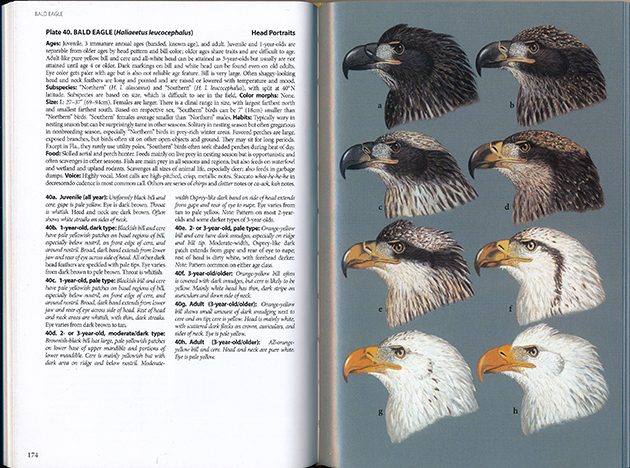
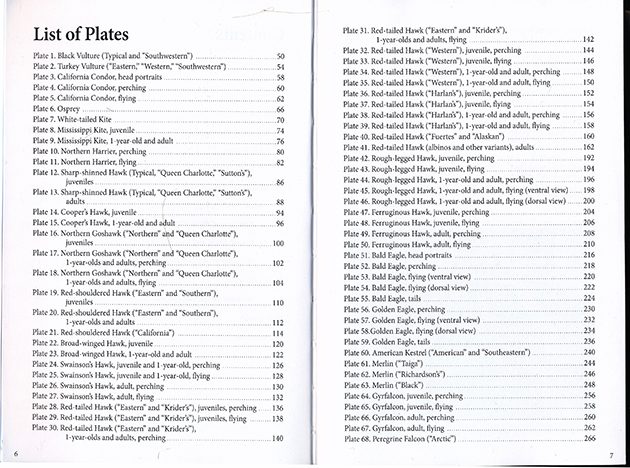
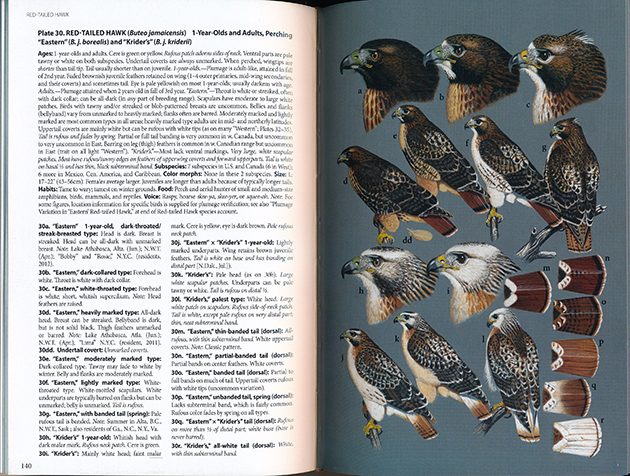
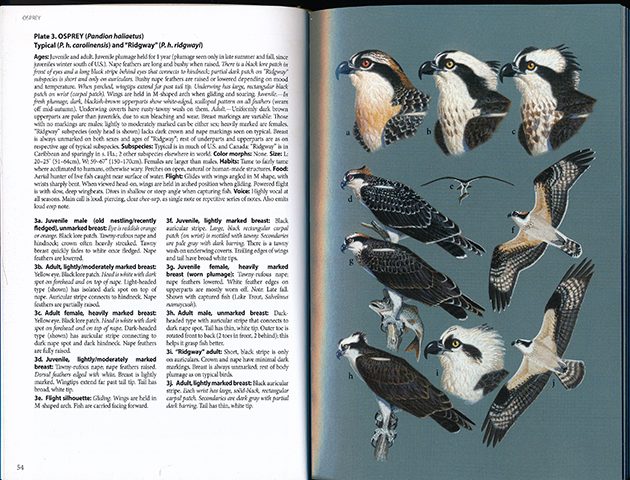
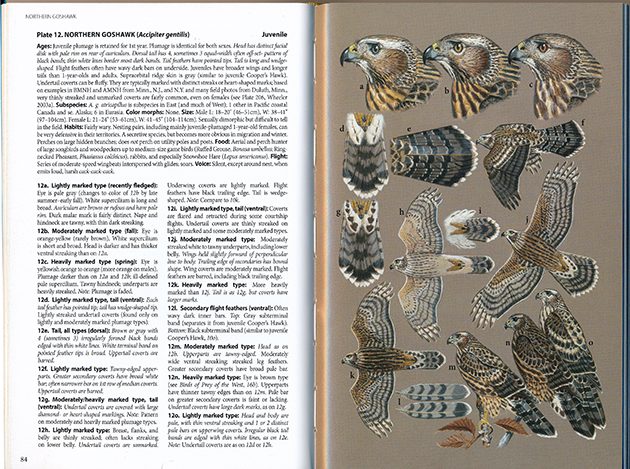
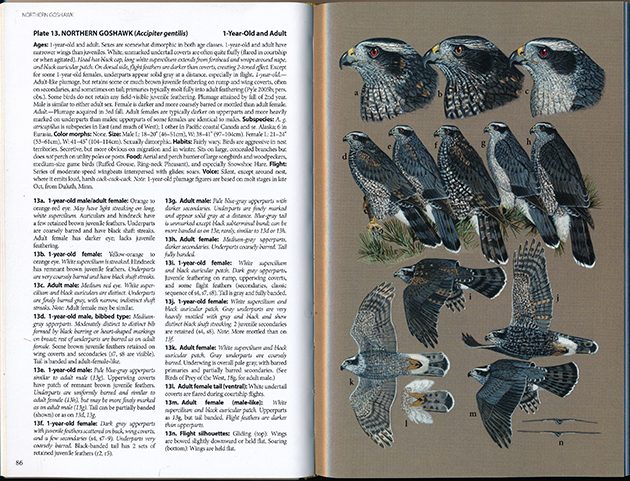
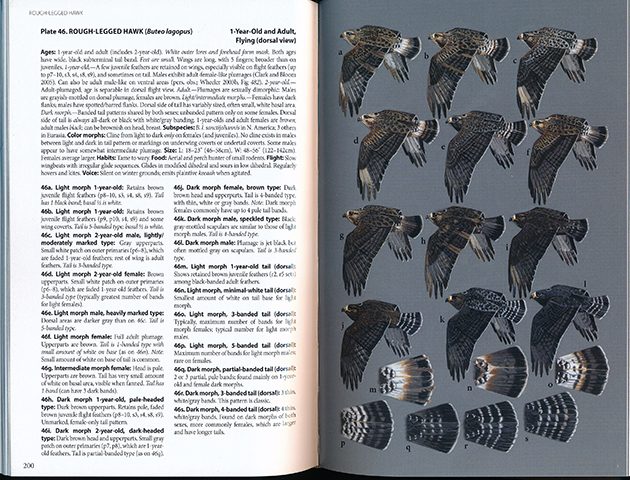
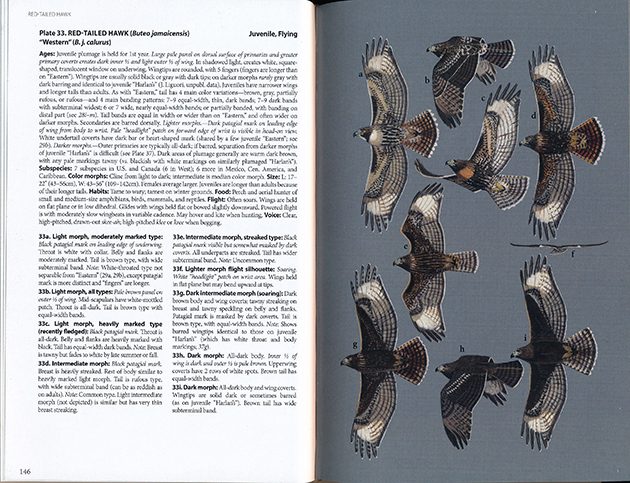
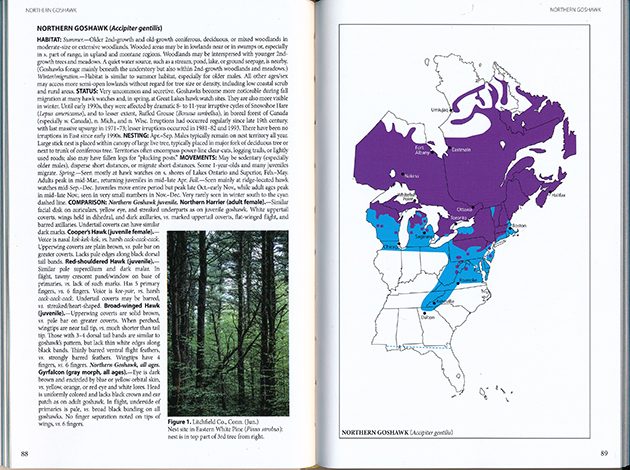
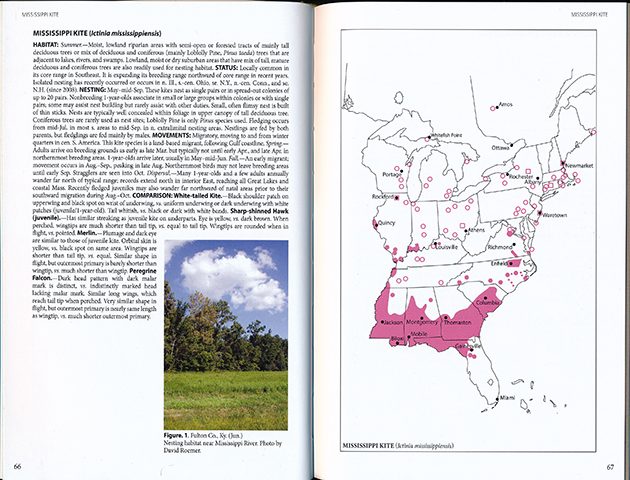
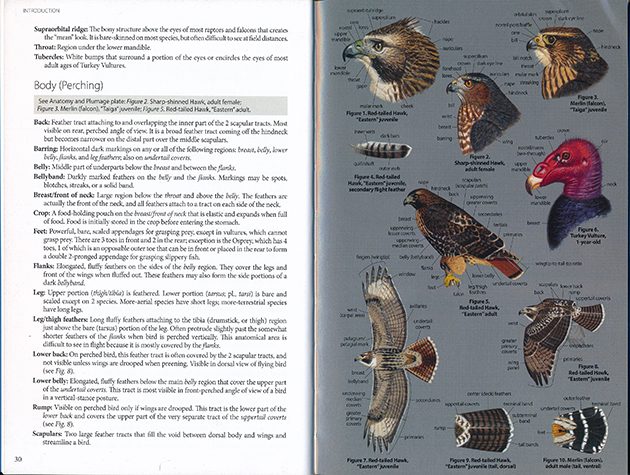
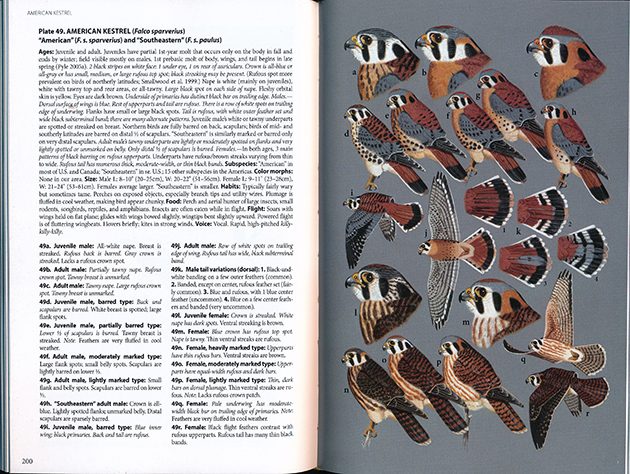










Fantastic review for a fantastic book. Its a groundbreaking book on birds of prey and Brian has raised the bar for future books on birds.